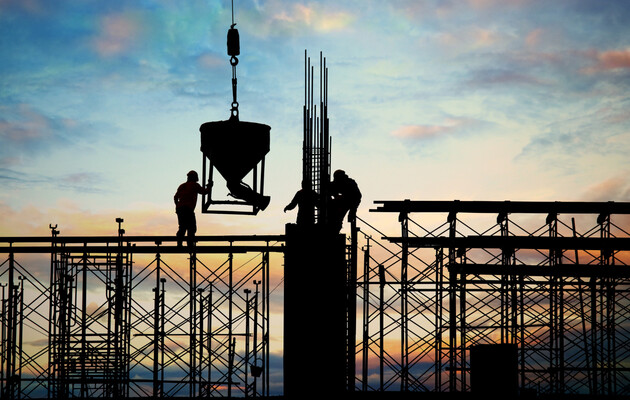Reconstruction on pause. What is wrong with the budget of Ukraine for 2024

Officials, who this year unanimously advocated for the need for rapid recovery, plan to significantly reduce these expenses in 2024.
Therefore, Ukrainians can expect a pause in compensation for damaged and destroyed housing, a partial curtailment of reconstruction at the state and local levels, as well as a slow pace of restoration of damaged infrastructure.
And it's not a matter of transferring these expenditures to defense if only that was the case. It is a matter of other "priorities" of the state.
It's no secret that the entire social bloc — pensions and scholarships, public sector salaries, education and medicine, business and citizen support programs, reconstruction — is almost entirely financed by international aid. Next year, for which Ukraine needs to attract almost 43 billion dollars, will not be an exception.
In addition, spending Western money on own salaries due to an increase in labor costs in certain unreformed central executive bodies is a serious signal to international partners, on whose shoulders rests the entire future reconstruction of our country.
After all, for the West, there remain the following two aid priorities:
- the first is a weapon for victory;
- the second is money for reconstruction and welfare in exchange for reforms.
Five times less rebuilding
The figures opposite the ministries and state departments in the draft budget clearly demonstrate the political schedules in the government with a bias towards the power bloc and the social group.
The Ministry of Economy (+628%) and the Ministry of Strategic Industries (+618%) will make the biggest jump in receiving funds. The logic of increasing the funding of the Ministry of Defense to UAH 56 billion is interesting, when this year, out of the allocated UAH 7.7 billion, the ministry spent only UAH 633 million on programs for the development of the defense and industrial complex. Almost as much as the Ministry of Defense spent on Rosenblatt drones that do not fly.
A threefold decrease in the budget of the Ministry of Reconstruction and the Reconstruction Agency compared to the current year is also noticeable. Their financing was "cut" from UAH 119 billion to UAH 39 billion for both. After a sharp start, the recovery agency may curtail reconstruction activities: out of the planned 26 billion UAH, 23 billion will have to be given as repayment of former loans to Ukravtodor. Even less, UAH 12.5 billion, are planned to be allocated to the Ministry of Reconstruction.
Still, the minimum needs for the reconstruction of Ukraine in 2024 are almost five times higher and reach more than UAH 170 billion.
The most important of them are:
- compensation for destroyed housing in the amount of UAH 20 billion, which was planned to be paid to people for the purchase of more than 10,000 apartments and 6,000 houses;
- construction of critical infrastructure protection facilities;
- comprehensive restoration of settlements;
- completion of the implementation of objects, so that they do not become long-term unfinished constructions, in total for the amount of about 53 billion hryvnias.
The fund for liquidation of the consequences of armed aggression, which most transparently finances reconstruction objects, is expected to halve in 2024. After all, now it will be filled by only one source - the funds confiscated from Russian individuals and legal entities on the territory of Ukraine (this year it is UAH 25.8 billion out of UAH 62 billion).
Thus, in 2024, it should be expected that the following will be frozen:
- reconstruction measures;
- eRecovery
Rollback of reforms
Ukraine Facility, a mechanism developed by the European Commission, provides 50 billion euros for the reconstruction of Ukraine over the next four years. However, European investments will be given to us only in exchange for Ukrainian reforms, as well as anti-corruption mechanisms and transparency tools.
The key achievements in 2023 are the prioritization of reconstruction projects, the publicity of the funds, the launch of the DREAM electronic reconstruction system — can be "multiplied by zero" by the government with only one reserve fund. This is a convenient mechanism for the government, when funds are channeled through controlled central executive bodies, and not the Fund commission, whose meeting is broadcast.
It is through it that next year they plan to rebuild in manual mode the entire critical infrastructure, from roads and bridges to water mains and structures for the protection of critical objects.
Thus, the Ministry of Economy reserves the right to finance some reconstruction projects (in particular, roads) through the mechanism of the reserve fund, and not on the basis of already formed state institutions. In the short term, this can lead to their destruction and the need to create new ones virtually from scratch.
International partners probably won’t like the fact that after almost a year of developing the methodology in Ukraine, they are abandoning the rules for prioritizing reconstruction projects and neglecting publicity. It was these two conditions that stopped the allocation of millions for stadiums and swimming pools in the war.
The main risk of all this may be a decrease in trust in Ukraine and, as a result, support.
What can be done
One of the main problems is the short life of working initiatives. For example, the Fund for the Elimination of the Consequences of Armed Aggression in 2023 was provided for in accordance with the budget program and is regulated by the law on the state budget only for a certain year.
Accordingly, all mechanisms of transparency and reduction of corruption risks disappear as soon as the corresponding program or column of funding for the year disappears. In addition, it can lead to the collapse of DREAM, which is the exact opposite of "manual mode", because it works according to the principle of "everyone sees everything" and is oriented towards transparent reconstruction.
In order for all developed tools that enable the public and media to control expenses to work, it is necessary to provide for the creation of a fund at the level of the Budget Code, following the example of the State Fund for Regional Development.
National Recovery Fund
Amendments to the Budget Code can solve the situation. Currently, there is such an initiative. As confirmed by the documents at our disposal, the deputies will propose to create a National Recovery Fund.
Amendments to draft law No. 10037 will be submitted to the second reading and will provide for changes to Article 24 of the Budget Code (reserve fund) regarding the creation of a permanent National Recovery Fund.
What are the advantages?
First, the argument "for" is that the Fund will try to combine the currently dispersed international aid for measures to restore and overcome the consequences of armed aggression, as well as the funds of the Compensation Fund for compensation for damages (The Hague) and the money of the general fund of the state budget, provided for reconstruction.
Secondly, and this is the most important, it is planned to apply prioritization criteria to all expenditures from the Fund, as it began to work in the Liquidation Fund. It is important to provide that such prioritization becomes mandatory for the selection of objects. This will make it possible to use the funds only considering the priority needs of the population.
These two key conditions can simplify the monitoring of reconstruction costs, and also prevent the financing of projects that are not on time.
What do they propose to direct the funds of the National Fund to
It is expected that the Fund will become a source of financing for all areas of reconstruction (from compensation for housing to the reconstruction of social facilities), including the following:
- development of project and estimate documentation, dismantling and construction of residential objects, public buildings and structures, infrastructure objects, protective structures of civil defense and other immovable property, which were destroyed or damaged or which are necessary to overcome the consequences of armed conflict aggression of the Russian Federation;
- purchase of school buses, specialized sanitary transport for the centers of emergency medical assistance and disaster medicine, special transport for communal enterprises for landscaping;
- development of project and estimate documentation and construction of critical infrastructure facilities and other engineering and technical means for their protection;
- projects of comprehensive restoration of settlements that suffered as a result of full-scale armed aggression of the Russian Federation;
- compensation to citizens for damage and destruction of certain categories of real estate objects as a result of hostilities;
- co-financing from the state budget in the amount determined by the grant agreements for the implementation of measures to restore Ukraine and overcome the consequences caused by the full-scale armed aggression of the Russian Federation against Ukraine;
- other works and services for the implementation of measures to restore Ukraine and eliminate the consequences of the full-scale armed aggression of the Russian Federation against Ukraine, by decision of the Cabinet of Ministers of Ukraine.
What we lack
It is important, following the example of the Liquidation Fund, to provide for the activity of commissions for considering applications for funding before the Cabinet of Ministers makes a decision, the possibility of submitting projects by local self-government bodies (this is especially relevant given the fact that they were left without a military personal income tax return), the publication of all applications for funding before the meeting of the commissions, as well as reports on the use of funds, reports on prioritization and the application of DREAM in this process.
***
During the past days and weeks, Ukraine received a number of red flags, which speak better than any conclusions about the situation with reforms and the future support of the social block and reconstruction.
First, the White House clearly hinted at the need to speed up the implementation of reforms and the fight against corruption by sending a shortlist with deadlines ranging from three months to a year and a half. Among the key ones is the appointment of general inspectors for reconstruction in the government.
Secondly, the USA appointed the inspector general of the Ministry of Defense, Robert Storch, as the supervisor of aid in Ukraine, in order to have information that "American aid reaches the intended beneficiaries, the set goals and is protected from fraud and corruption." He will start work on October 18 and will cooperate with the State Department and USAID. Currently, 79 reports on the use of US aid are being prepared.
Thirdly, the European Union is working on the development of an assistance tool within the framework of the 50-billion-dollar Ukraine Facility, payments under which are possible after quarterly verification of the fulfillment of conditions.
It seems that there is more than enough information to think about.
Please select it with the mouse and press Ctrl+Enter or Submit a bug











 Login with Google
Login with Google